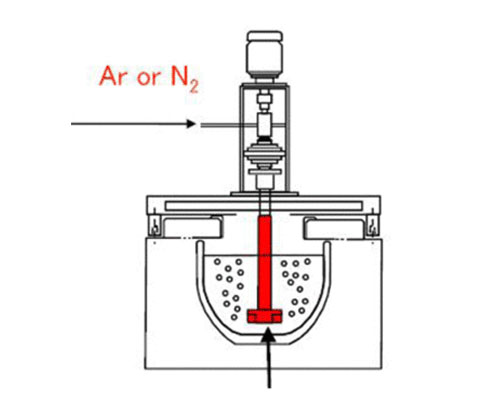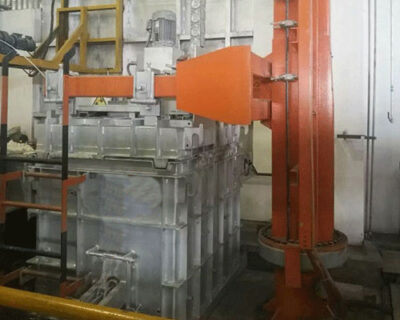Molten aluminum refining degassing is important in the aluminum casting industry. There are many factors that affect the quality of aluminum and its alloys. Among them, the hydrogen content, inclusions, and alkali metal concentration of the aluminum liquid are the most important factors. There is much research on how to reduce the hydrogen and inclusion content in aluminum liquid, and many new processes and molten aluminum refining degassing equipment have appeared on the market.
Molten Aluminum Refining Degassing
The online degassing process can be roughly divided into gas blowing methods, vacuum refining methods, and ultrasonic refining methods. This article focuses on the gas blowing method.
Principle of Gas Blowing Method
The gas blowing method, also known as the float method. It is mainly to form many small bubbles after blowing inert gas into the aluminum liquid. The initial pressure of hydrogen in the bubble is zero, and there is a hydrogen pressure difference at the interface of the bubble and the liquid aluminum, so that the hydrogen dissolved in the aluminum liquid is continuously sucked into the bubble. It will stop when the pressure of the medium hydrogen is equal. After the bubbles float out of the liquid surface, the hydrogen in the bubbles escapes and enters the atmosphere.
In addition, the bubbles meet the oxide inclusions in the melt. The bubbles adsorb the inclusions on the surface. The bubble rising process can bring out hydrogen gas and oxidation inclusions, so as to achieve the degassing effect and the refining effect.

Inert Gas Inlet Method
In the gas blowing method, the method of passing inert gas to the aluminum liquid has a great influence on the degassing and refining effect. At present, there are three common methods for the molten casting plant: degassing pipe, breathable brick, and rotary degassing.
The simplest method of the gas blowing method is to insert a refining tube into the aluminum liquid, and then pass inert gas. This single hole single tube degassing method has a poor degassing effect. Some melt-casting plants also install breathable bricks at the bottom of the furnace. Inert gas passes through the breathable bricks to form multi-channel bubbles. Compared with the single-hole blowing method, the porous blowing method has a slightly better degassing and refining effect. However, in the actual use process, the air-permeable bricks have the disadvantages of easy clogging, leakage of aluminum liquid, difficulty in maintenance and repair, serious liquid surface tumbling, and more slagging.
With the deepening of research, the rotary degassing method has appeared. The basic principle is that inert gas is sprayed into the aluminum liquid through the rotating rotor to form a large number of dispersed bubbles, so as to perform the degassing refining process. In order to improve the degassing efficiency, the number of inert gas bubbles should be as large as possible. The diameter of the inert gas bubbles is small, the residence time of the inert gas bubbles is long, and the liquid surface of the aluminum liquid is as stable as possible.
Aluminium Liquid Degasser
According to incomplete statistics, 99% of the online deaerators currently on the market are box-type rotary deaerators. The degassing and refining effect of the box deaerator is high, and the heating system can reduce the temperature loss of casting. The box-type rotary degasser increases the residence time of bubbles, thereby improving the degassing and refining effect.
The aluminum liquid flows into the degassing cabinet body, and resides in the refractory lining. The box body has a heater, and the aluminum liquid thus maintains the molten state. After ejecting the inert gas through the rotating rotor, it generates a lot of bubbles, and the small bubbles diffuse and rise in the aluminum liquid to remove hydrogen. During the rising process of small bubbles, due to the effect of surface tension, the bubbles will take the inclusions from the liquid surface. At the same time, the alloy composition in the aluminum liquid is more uniform by the stirring of the rotor.

